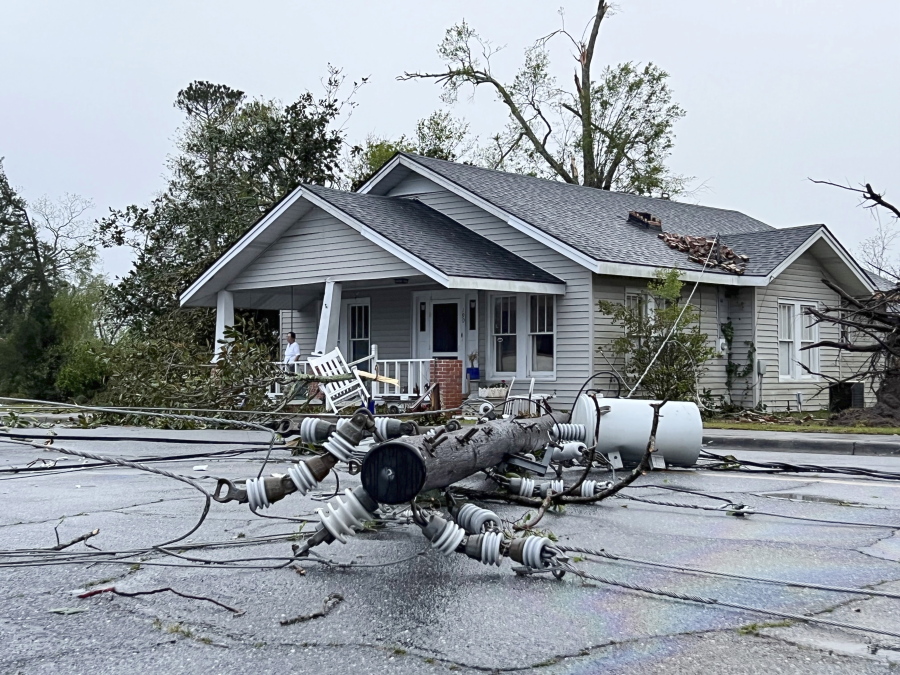Damaging storms already sweeping across the country in the first weeks of spring have been a reminder of the dangerous and even deadly weather the season can bring.
Conditions are ripe in spring for storms that can bring strong winds, lightning, flooding rain and even tornadoes.
“Whenever warm, moist air collides with cool, dry air, thunderstorms can occur. For much of the world, this happens in spring and summer,” the National Center for Environmental Health says.
Here’s what to know about how to prepare your home and family for severe storms:
- How to prepare your home for thunderstorms, tornadoes
There are steps you can take before bad weather is in the forecast to minimize or even prevent storm damage to your property, the insurance company Nationwide advises.
Tending to the trees on your property, including clearing dead limbs, can reduce the number of things that could fly up in a storm.
“During a storm, dead tree limbs can get loose and cause damage to a home’s exterior or even puncture a window,” the agency says. “Heavy rain can also cause trees with shallow root systems to pull out of the ground.”
Make sure any fencing around your home and patio furniture is secure so that it can’t “become flying debris.”
And clearing your gutters may not be the most enjoyable chore, but doing so allows rainwater to drain properly, preventing potential water damage to your home.
- Emergency preparedness tips
The Southeast has a “greater risk for tornadoes,” the Federal Emergency Management Agency advises, so it’s important to have a plan for what you and your family will do to stay safe in the event of an emergency.
FEMA recommends having multiple means of receiving emergency alerts, including having a NOAA radio, paying attention to local media and official social media accounts and making sure your phone is set to receive notifications from emergency services.
It’s also important to know where you’ll go in your home in the event of a tornado warning, FEMA advises. Your “safe shelter” should be “a small, interior, windowless room or basement on the lowest level of a sturdy building.” If you have pets, you also need to make sure your shelter can accommodate them. And it’s good to practice quickly getting to your shelter, especially if you have children.
Nationwide adds that it’s also important to put your valuables and important papers such as mortgage documents and birth certificates in water-proof, fire-proof containers that you could potentially take with you in the event of an evacuation.
You should also have an inventory of valuables and copies of your insurance documents, and make sure a trusted friend or relative has back-up copies.
If you do have to head to your shelter because of a weather emergency, FEMA recommends that you “protect yourself by covering your head or neck with your arms and putting materials such as furniture and blankets around or on top of you.”



